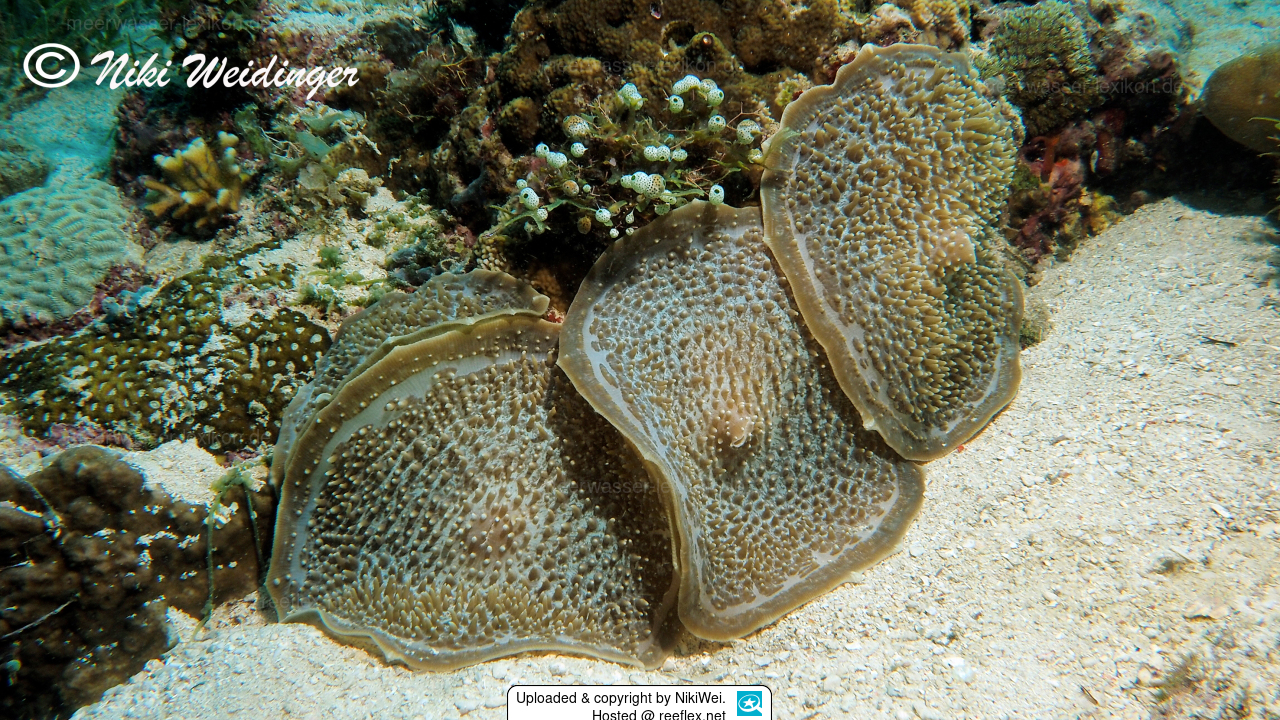Info
Amplexidiscus fenestrafer Dunn & Hamner, 1980
An easy-to-care-for disc anemone, but one that is rarely found in stores. As the name suggests, it grows huge. The elephant ear poses a danger to other animals in the aquarium, as the species tends to eat non-sessile animals. Newly introduced animals are particularly at risk. It is therefore advisable to keep elephant ears separately in a species tank.
The species shown feeds on its zooxanthellae and on food that it catches. It should be given plenty of light, as this will help it to grow better. We know of quite a few aquarists who have lost large angelfish while keeping elephant ears. So be careful!
The commensal shrimp Pliopontonia furtiva is often seen on the large disc anemone.
Etymology
The specific epithet "fenestrafer ," meaning "window-bearer" in Latin (fenestra and fer) refers to the circular, tentacle-free zone near the margin of this animal
Synonym: Discosoma fenestrafera (Dunn & Hamner, 1980)
An easy-to-care-for disc anemone, but one that is rarely found in stores. As the name suggests, it grows huge. The elephant ear poses a danger to other animals in the aquarium, as the species tends to eat non-sessile animals. Newly introduced animals are particularly at risk. It is therefore advisable to keep elephant ears separately in a species tank.
The species shown feeds on its zooxanthellae and on food that it catches. It should be given plenty of light, as this will help it to grow better. We know of quite a few aquarists who have lost large angelfish while keeping elephant ears. So be careful!
The commensal shrimp Pliopontonia furtiva is often seen on the large disc anemone.
Etymology
The specific epithet "fenestrafer ," meaning "window-bearer" in Latin (fenestra and fer) refers to the circular, tentacle-free zone near the margin of this animal
Synonym: Discosoma fenestrafera (Dunn & Hamner, 1980)







 NikiWei
NikiWei














